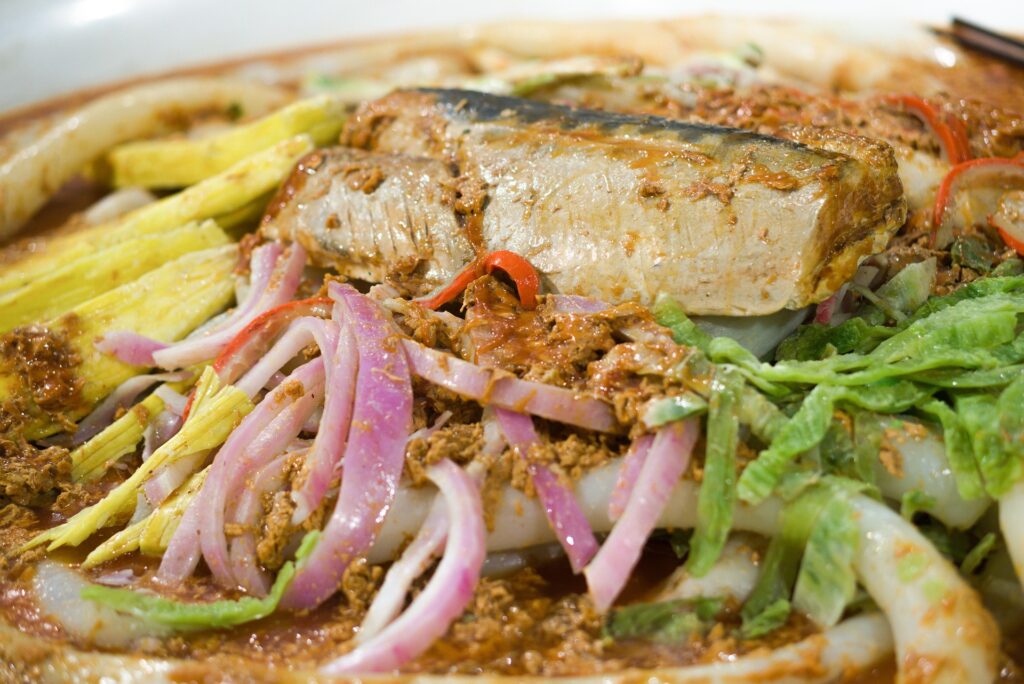If your laksa always hits harder when it’s “macam mak buat sendiri” — imagine making it with ingredients you grew yourself.
Welcome to the Laksa Garden — a spicy, fragrant, very Malaysian garden setup that gives you all the core ingredients of laksa, from daun kesum to serai to cili padi — right at your doorstep.
Whether you’re planting in a backyard or a condo balcony, here’s how to make your laksa garden a real thing.
🍜 What Is a Laksa Garden?
A Laksa Garden is simply a themed edible garden that focuses on the main herbs, spices, and leafy greens used to cook laksa — especially Penang, Assam, or Nyonya-style.
The best part? Most of these plants are low-maintenance, space-friendly, and thrive in Malaysia’s tropical climate.
🌿 The 6 Essential Plants in a Laksa Garden
1. Daun Kesum (Vietnamese Coriander)
- 🌱 Key flavour in Penang/Assam laksa
- Thrives in moist soil and partial shade
- Easy to regrow from store-bought stalks
💡 Grow in a tray, bucket, or any recycled container.
2. Serai (Lemongrass)
- Used to flavour the broth
- Likes full sun, grows well in pots
- Propagate easily from store stalks
🌱 Plant 2–3 stalks per pot for thicker growth.
3. Cili Padi (Bird’s Eye Chili)
- Adds heat and depth to laksa broth or sambal
- Prefers full sun and good drainage
- Takes ~60–90 days from seed to fruit
🫑 Try growing multiple varieties (red, green, yellow) for aesthetic flair!
4. Laksa Leaf (Polygonum / Wild Pepper Leaf)
Optional based on region
- Found in some Nyonya laksa recipes
- Strong earthy flavour
- Can grow in partial shade or indirect light
🪴 Not to be confused with kesum — this is a different plant used in regional variations.
5. Mint (Pudina)
- Used as garnish or to add freshness
- Grows well in shaded areas, even indoors
- Fast regrowth after trimming
🌱 Bonus: Makes great teh pudina too.
6. Torch Ginger (Bunga Kantan)
- Iconic aroma in laksa
- Large plant — best for those with backyards
- Takes longer to flower, but worth it!
🦋 Attracts butterflies and bees too!
📦 How to Arrange Your Laksa Garden
| Garden Size | Setup Suggestion |
|---|---|
| Condo/Balcony | Grow kesum, mint, chili & serai in pots or recycled containers |
| Small Yard | Add bunga kantan & laksa leaf in a corner plot |
| Raised Bed | Plant chili in center, surrounded by lemongrass & kesum |
| DIY Rack | Use a vertical stand for smaller herbs (pudina, kesum, etc.) |
💡 Companion tip: Chili and serai grow well together!
🧪 What Soil and Fertiliser to Use
- Use loose, well-draining soil with compost
- Add banana peel tea or rice water every 2 weeks
- For chili and bunga kantan, add chicken manure once a month
📅 How Long Until You Can Start Cooking?
| Plant | Ready In |
|---|---|
| Kesum | 2–3 weeks from planting cuttings |
| Serai | 1–2 months for stalks, longer for clumps |
| Chili | 60–90 days from seeds |
| Mint | 3–4 weeks from cuttings |
| Bunga Kantan | 6–12 months (flowers bloom seasonally) |
✅ Within 1–2 months, you’ll already be harvesting your first laksa-ready leaves.
🌱 Tips to Keep Your Laksa Garden Thriving
- Harvest often to encourage regrowth
- Prune dead leaves to avoid disease
- Water in the morning, not at night
- Rotate potted plants for even sun exposure
- Keep pots raised on bricks or trays to avoid soggy roots
🎉 Bonus Idea: Turn It Into a Family Project
- Let your kids help plant the chili
- Teach elders how to repot kesum
- Turn your balcony into a sambal-ready station
✅ Wrap-Up
A bowl of laksa hits different when it’s grown by your own hands. Whether you’re a spicy sambal queen or a laksa-pedas-separuh kind of person — growing your own laksa garden is rewarding, fun, and deliciously Malaysian.
📸 Share Your Laksa Garden With Us!
Tag @projectharvest.my and show off your homegrown daun kesum and cili padi. Who knows — we might feature you next!

